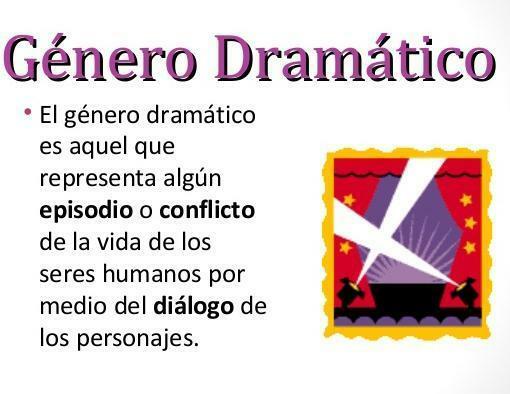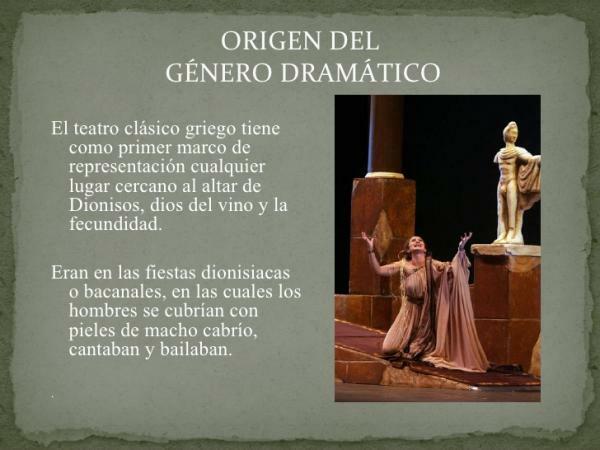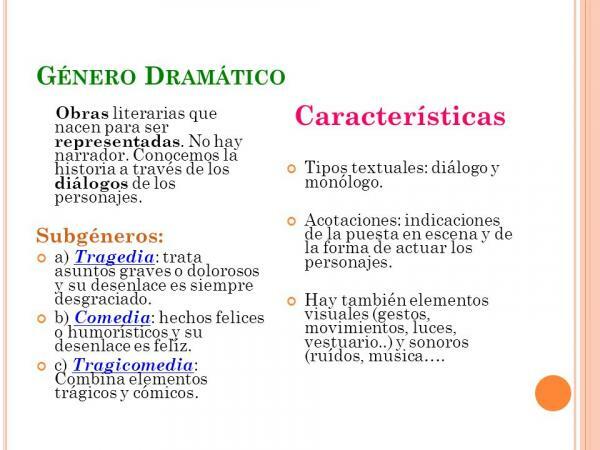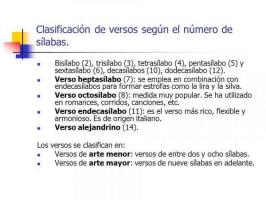DRAMATIC genre: characteristics and examples

Within the literary genres that exist, the dramatic is one of the most important and, also, one of the oldest. The origin of the theater dates back to Ancient Greece and, therefore, this genre has a great legacy behind it and a wide number of playwrights who have marked times: Homero, Shakespeare or Lope de Vega are just some of the most prominent names in sector.
In this lesson from a TEACHER we want to show you the characteristics of the dramatic genre and its examples so that you know better all the elements that make a text is considered dramatic.
Index
- What is drama genre?
- Origin of the dramatic genre
- What are the characteristics of the dramatic text?
- Examples of the dramatic genre
What is drama genre?
Within literature, there are different literary genresthat have been cultivated throughout history. The dramatic genre is one of them and, in fact, it is one of the most important since it appeared from the hand of one of the first civilizations in the world: Ancient Greece. But... What is the dramatic genre?
It is a type of literary text that represents a moment or a conflict that takes place in the lives of the characters that star in the story. They are texts that are characterized by the use of dialogue and in which the figure of the narrator does not exist: life takes the stage to be represented by actors and actresses who stage a specific moment.
Therefore, it is not a genre that is intended to be read but is intended to be interpreted. In the dramatic genre, therefore, we are faced with texts written to plays that can be read but that, above all, are created to be represented in front of spectators. The dialogue between the different characters is the tool used to define the personality of each one and manage to tell the story in an active way where actions abound and there are hardly any descriptions.
It is known as a dramatic genre because "drama" is the word used to refer to literary creations in which the playwright relates facts and events that take place in a specific space / time. The events are usually linked to different conflicts that human beings live and can be explained both with words, with movements and even with the scenery. Everything on stage comes to life to tell us what is happening between the lines.
Therefore, the definition of dramatic genre is that it is a literary genre that explains a specific event that takes place in the lives of the characters. These events can be told in a parodic, dramatic, etc., but with dialogue and action as key elements.

Image: Brainly
Origin of the dramatic genre.
We are going to make a brief foray into the origins of the theaterIn order to, thus, know the history of the dramatic genre, one of the oldest that we have.
It is a type of genre that originated in Ancient Greece. At first, these creations were motivated by worshiping the God of wine and joy, Dionysus, therefore, they were sacred and festive texts. But, over time, some changes were added to the compositions and that is how the dramatic genre appeared. Among the best known authors of that time we highlight Sophocles, Aeschylus and Euripides. The drama was also cultivated during the time of the Roman Empire having such renowned authors in its ranks as Plautus or Seneca.
However, during the Middle Ages the dramatic genre experienced a decline and, in fact, hardly any author wrote this type of literary work. However, during the XII in Europe se returned to cultivate this genre because the authors began to imitate the classics. This led to the appearance of comedies written in Latin and, precisely for this reason, they were performed only in academic or religious spaces such as monasteries, universities, courts, etc.
In Spain we can talk about the first play in Spanish in XII: "Auto de los Reyes Magos". It is an incomplete text since the final part is missing and it focuses on the adoration of the Magi to the Child Jesus. It is an anonymous work but it is the first sample of the drama in the Spanish language and, hence, its importance.

Image: Slideshare
What are the characteristics of the dramatic text?
To better understand what dramatic texts are like, below we are going to discover the main characteristics of the dramatic genre since, in this way, you will be able to learn to clearly identify this type of work literary. Here is a list of the most outstanding features:
- Dialogue: In dramatic works, the action and presentation of the characters is explained through the use of dialogue. The characters talk to each other and, from that conversation, we can better understand their psychology and nature.
- There is no narrator: Another very characteristic element of the drama is that the figure of the narrator does not exist. Everything is explained in the mouths of the characters who, through their interactions during the play, tell us everything that is happening.
- The importance of action: Another of the characteristics of the dramatic genre is that it is a type of text in which the acts are equal or more important than the words. The gestures of the characters, their looks, their movements, etc., give us a lot of information about their way of being and seeing the world.
- There are no descriptions: being a type of text in which action predominates, in drama there is no place for descriptions. The scenography or staging will be in charge of reflecting what the space or time in which we find ourselves is like. And the rest must be read between the lines with everything that is represented on stage.
- Theater professionals: Unlike other literary genres, in the case of drama it is important to have other professionals, in addition to the playwright, so that the work can be fully enjoyed. Actors, directors, light and sound technicians, producers, etc., are some of the professionals who are usually part of the performances.
- To be represented: dramatic texts are written, not to be read, but above all to be represented. Although they can be read, the playwright's goal is to stage the play.
- Universal themes: in a habitual way, theatrical works tend to talk about universal themes that concern the human being (love, revenge, social injustices, etc.). They are works that have a communication objective and that, therefore, are written to launch a message or an idea.
- Verse or prose: Although today the drama is usually written in prose in order to better reflect people's real life, the truth is that during the Golden Age it was written in verse. Lope de Vega was one of the most important authors of this time in Spain since with his New Art of Making Comedies managed to update the genre and make it become a social event.
- Annotations: Another of the characteristics of the dramatic genre is that it is a type of text that has annotations, that is, indications that the playwright gives to the actors or the director so that the staging can be done as he has in mind. These dimensions inform about the characters' entrances, the space in which they are, the clothing they wear, and so on.
- Structure: dramatic works, unlike other literary genres, are divided into Acts. And, each act has different scenes that differ as the plot progresses.
- Dramatic subgenres: we find that the most important subgenres of the dramatic genre are the comedy, tragedy and farce.

Image: Slideplayer
Examples of the dramatic genre.
There are many works that are examples of the dramatic genre, such as Romeo and Juliet, King Oedipus,Sheep fountain, Bernarda Alba's house, etc.
These texts, although they can be read, are usually enjoyed more when you go to a theater and see the performance of the play. When you see the text, you will realize that they are presented in a very particular way and with its own elements such as Acts, Scenes, annotations and the interventions of the characters in the form of dialogue.
We leave you an attached image of a example of dramatic genre so you can see how this type of text usually looks when it is read in written form.

Image: Tramody
If you want to read more articles similar to Dramatic genre: characteristics and examples, we recommend that you enter our category of Literary concepts.
Bibliography
- Vicario, M. M. (2000). Dramatic Genres (Vol. 124). Editorial Fundamentos.
- Castagnino, R. H. (1981). Theories on dramatic text and theatrical representation. Editorial Plus Ultra.
- Regueiro, J. M. (1990). Dramatic Genres in the 16th Century: The Theater to Lope de Vega.



